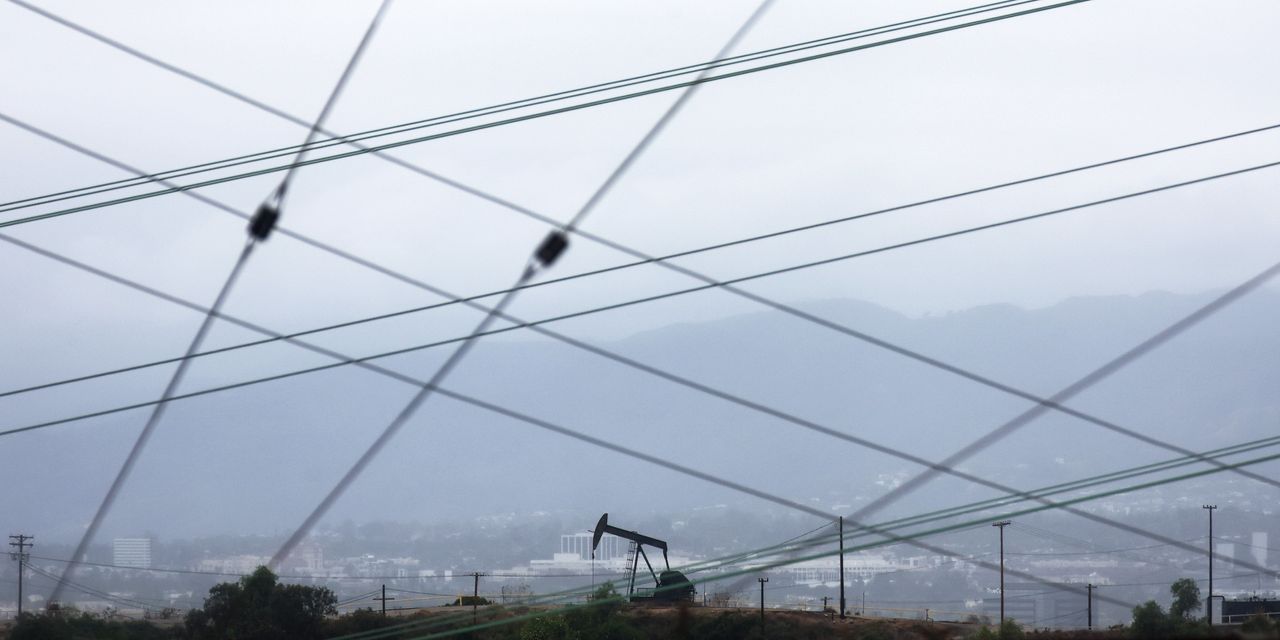Oil futures settled higher Thursday, shaking off earlier losses on the back of a U.S. agreement to ease sanctions on Venezuela, as traders remained concerned over a potential expansion of war in the Middle East, which could disrupt the global energy market.
Prices had spent part of the session moving lower after the U.S. agreed to ease sanctions on Venezuela’s oil and gas sectors.
Price action
-
West Texas Intermediate crude for November delivery
CL.1,
-0.39% CLX23,
-0.39%
rose $1.05, or 1.2%, to settle at $89.37 a barrel on the New York Mercantile Exchange ahead of the contract’s expiration at the end of Friday’s session. December WTI
CL00,
-0.08% CLZ23,
-0.08% ,
the most actively traded contract, added $1.10, or 1.3%, at $88.37 a barrel. -
December Brent crude
BRN00,
+0.38% BRNZ23,
+0.38% ,
the global benchmark, climbed 88 cents, or 1%, to $92.38 a barrel on ICE Futures Europe. -
November gasoline
RBX23,
+0.60%
rose nearly 0.4% to $2.36 a gallon, while November heating oil
HOX23,
-0.14%
added 1.1% to $3.17 a gallon. -
Natural gas for November delivery
NGX23,
-1.29%
settled at $2.96 per million British thermal units, down 3.2%.
Market drivers
“Energy markets are in the grasp of geopolitical events,” said Tariq Zahir, managing member at Tyche Capital Advisors.
The biggest fear is an expansion of the Israel-Hamas war, and Iran gets involved, he said. “We could see Iran cause issues in the Strait of Hormuz,” the world’s most important chokepoint.
“Supply disruptions are the biggest concern and we do not see that abating any time soon,” Zahir told MarketWatch.
Oil prices settled higher Thursday, after spending some time moving lower.
The U.S. Treasury late Wednesday issued a six-month general license that would temporarily authorize transactions involving Venezuela’s oil and gas sector, another that authorizes dealings with Minerven — the state-owned gold mining company — and removed the secondary trading ban on certain Venezuelan sovereign bonds. The temporary relaxation of sanctions came after the government of Venezuelan President Nicolás Maduro and a faction of its opposition agreed to work together to reach a series of basic conditions for the next presidential election.
The easing of sanctions provided “some relief to the supply-side pressures that have supported the recent price rises,” said Ricardo Evangelista, senior analyst at ActivTrades, in a note.
A deal paves the way for a medium-term increase in production, though the potential expansion is hindered by the prolonged lack of investments in the industry, said Sofia Guidi Di Sante, senior oil analyst at Rystad Energy, in a note.
“In the short term — six months after sanctions are lifted — production could only ramp up by a maximum of 200,000 barrels per day; a relative drop in the ocean on the global stage,” she said ahead of the announcement.
Earlier: Venezuela is set for a ‘long journey’ to boost oil output if U.S. eases sanctions
Oil prices had seen a sharp gain Wednesday take crude to its highest since before the Oct. 7 Hamas attack on Israel.
Wednesday’s jump came after a blast at a Gaza hospital prompted Iran to call for an OPEC embargo against Israel and stoked fears the Israel-Hamas war could spread, threatening oil supplies. Reuters subsequently reported that OPEC had no plans for an immediate response.
See: There’s less to oil-price spike than meets the eye as Israel-Hamas war worries rise
Traders will continue to watch developments in the Middle East, with a recent rise in U.S. oil production to its highest on record doing little to ease concerns about risks to oil supplies.
In the short term, the largest amount of global spare oil capacity sits in Saudi Arabia, where production from September 2022 to August 2023 has fallen by more than 2 million barrels a day on a voluntary basis, said Peter McNally, global sector lead for Industrials Materials and Energy at Third Bridge.
““The obvious problem is the location of that spare capacity — it is in the Middle East.” ”
“The obvious problem is the location of that spare capacity — it is in the Middle East,” he told MarketWatch.
Read: U.S. oil production hits record as Israel-Hamas conflict stokes global supply fears
Meanwhile, natural-gas futures fell by more than 3% on Nymex after the U.S. Energy Information Administration reported a bigger than-expected weekly rise in domestic supplies.
Natural-gas inventories in U.S. storage rose by 97 billion cubic feet for the week ended Oct. 13, the EIA reported Thursday. On average, analysts surveyed by S&P Global Commodity Insights forecast an increase of 83 billion cubic feet.
Read the full article here













Leave a Reply